![]()
Name: Craig Chval
E-mail: cchval@nd.edu
Location of Study: St. Petersburg, Russia
Program of Study: The School of Russian and Asian Studies (SRAS)
Sponsors: Nanovic
![]()
A brief personal bio:
I just finished my junior year at the University of Notre Dame, where I am triple majoring in math, economics, and Russian. I was born in the suburbs of Chicago, but I grew up in Columbia, Missouri. For the last three years, I have worked in the sports media relations department at Notre Dame, which involves working with the media at sporting events and writing articles for the football programs and blog. This summer will be my first time outside North America, as most of my family trips growing up were to Notre Dame.
Why this summer language abroad opportunity is important to me:
Since I started studying it, I have been fascinated by Russian language and culture. Its political evolution, ambiguous cultural identity, and ever-shifting relationship with the U.S. make Russia a complicated and enriching area of study.
Yet the complicated nature of Russian history simply cannot be captured in an American classroom. Therefore I have always desired to experience the country first-hand so that I might become actually immersed in the area I have spent so much time studying.
I am also very excited about the gains I can make in my language study. I quickly learned Russian is an incredibly difficult language, and no matter how easily I could grasp grammatical structures or memorize vocabulary I grew frustrated with my progress. It is so dramatically different that it remains difficult for me to speak and understand.
I do not believe I can accomplish proficiency with another year in school, nor do I wish to forget what I have learned upon graduation. As a math and econ major, I wish to enter business, and another language is a key asset, especially an uncommon language. I firmly believe I can achieve such proficiency with the benefit of an international study.
What I hope to achieve as a result of this summer study abroad experience:
My biggest goal is to be able to speak fluidly by immersing myself in the Russian environment. People don’t speak language exactly as it is taught in a textbook, and it’s hard to absorb a language that you’re never around. While speaking Russian, I think word by word about what I want to say. Hopefully by spending 10 weeks in Russia, my speech and understand will become much more fluid. While becoming immersed, I hope also to gain an understanding of Russian culture, which is also impossible to fully realize in an American classroom setting. St. Petersburg is the cultural center of Russia, so I couldn’t wish for a better place to learn.
My specific learning goals for language and intercultural learning this summer:
By the end of the summer, I will be able to have fluid conversations with native Russians without using English.
2. By the end of the summer, I will be able to navigate a large Russian city by reading signs or asking directions.
3. By the end of the summer, I will be able to read and understand Russian literature, such as in newspapers or short stories.
4. By the end of the summer, I will have learned a significant amount of Russian culture through my visits of museums, tours, and interactions with native Russians.
My plan for maximizing my international language learning experience:
My program, the School of Russian and Asian Studies (SRAS) has a “Culture Lab” really drew me to the program. It includes tours of museums, including The Hermitage and The Russian Museum, two extremely historic places.
There are also tours of various important landmarks of Russian history, from the tsarist palaces to World War II battle sites. The program even involves sites outside the city, with a tour to Novgorod. But the program is far from purely academic. It offers exploration into Russian cuisine, a cultural performance, and a social event to meet locals.
Outside of the actual SRAS program, I plan to immerse myself in the athletic culture of St. Petersburg. Unfortunately, it will not be hockey season, but I would love to make a regular appearance at other sporting events and witness the difference between Russian and American fan mindsets.
Extra-curricular community involvement is for me one of the major draws of a study abroad program, and I will be sure to take every advantage possible.
![]()
Reflective Journal Entry 1:
After one week of classes in St. Petersburg, I’ve gone on two tours (one of the central part of the city and one of the Peter and Paul Fortress). I’ve walked around the canals several times, I’ve been on the metro twice, I’ve waited on the banks of the Neva for two hours to watch the nightly raising of the bridges.
In short, I’ve fit my tourist stuff in. I’ve still got a lot planned, obviously, since I’m here for nine more weeks. In fact, I’m going to the Hermitage Museum – one of the oldest and largest museums in the world – and the Mikhailovsky Theatre later this week. But getting all my touristy stuff fit in, I’ve come to the realization that I’ve got to figure out how I’m actually living here.
When I decided to spend the summer in Russia, I knew it was going to be completely different from what I was used to. My only other experience in a foreign country was going to Montreal in the winter, and pretty much everyone there spoke English. Some people here speak English, or can at least recognize when you might need an English menu, but it’s a pretty small segment of the population.
The only really difficult part of the adjustment has been ordering and buying food, which is unfortunately an obviously common occurrence. I know a decent smattering of food vocabulary, but not nearly enough to actually know what I’m buying 100% of the time. I bought a packet of lunchmeat and, even with the help of Google Translate back at my dorm, I couldn’t figure out what I had actually gotten. Instead of regular water and sour cream and onion chips, I accidentally bought four liters of carbonated water and a bag of “sour cream and dill” chips. They like their dill here.
The actual transactions are the hardest part, though – the cashier will invariably ask me a question – do I want a bag? Do I have exact change? (They’re weirdly insistent about that one.) It’s usually pretty hard to understand them, and a lot of times I’ll just smile and say no regardless of the question. But seriously, if something costs 60 rubles ($1.75), they will not be happy with a 100-ruble bill ($2.91).
Basically I’m getting used to life here, though. I’ve gotten over my jet lag, I’ve learned which shops to buy water (you can’t drink the tap water) and which to buy groceries. Which parks to walk around in to see the 11:30 sunsets, which places to buy a snack during my 15-minute break of class (which lasts from 10:30 to 2:30). I know how much a metro token costs and how much the corner convenience store is ripping me off. I’ve figured out that some parts of Nevsky Prospect don’t have crosswalks because you have to go underground and that you can’t just take plastic bags at grocery stores because they cost money.
I’m incredibly excited for the opportunity to continue to learn these things about my new city, as well as to hone my language skills. This will very likely be one of the best experiences of my life, and I’m intrigued to see how much more I can see and learn throughout the entire summer.
Reflective Journal Entry 2:
Reflective Journal Entry 4:
Living in a country with so much culture and history, it’s amazing how many new things I’m able to experience each week. On Saturday, the entire program took a bus to the city of Veliky Novgorod, about three hours from St. Petersburg. Founded in 859, Novgorod is Russia’s oldest city, and it’s disconcerting walking around a city with buildings that have been around since 400 years before my country was discovered.
Novgorod has several famous churches, the oldest of which was founded in the 12th century. The city is also famous for its Kremlin, the first fortress in Russian history. In the Kremlin is the Holy Sophia Cathedral, which was founded in 1050. Outside the church is a memorial for the millennium of Russia, erected in 1862.
The monument has 129 individual statues commemorating 100 years of Russian history, showing Ivan the Great, Peter the Great, Catherine the Great, Aleksandr Pushkin, Michael Lermontov, and many others.
In addition to visiting Novgorod this week, we also went to the Dostoevsky Museum, which recreates the furnishing of one of the apartments in which he lived. We also visited the Kazan Cathedral, a famous church right by where we live. I’ve seen a decent number of churches over the last four weeks, and they still always impress when I visit each new one.
It rained a lot again this week, but the last couple days have been nicer. Yesterday we walked through some of the famous gardens in the center of the city. My professor says weather during July and August is usually better than June in Petersburg, so I’m looking forward to doing more outdoor activities, like visit beaches or go on a tour of canals.
I’m glad how my language continues to progress, and I can usually figure out what someone is saying to me. It’s still a little disappointing to go to a restaurant and have the waitress immediately start talking to us in English. I’m sure that over the next few weeks I will continue to improve, especially with speaking and conversing more naturally.
Reflective Journal Entry 5:
Halfway through my time in St. Petersburg, I’m still finding new things that amaze me in this city. But I actually started this week by making another trip to the Dostoevsky Museum. It was a planned tour by our program, and I couldn’t pass up an opportunity to get new insights from our fantastic tour guide, Sergei.
Sergei also took us to spots in the city that Dostoevsky alludes to in some of his novels, which often take place in Petersburg. We saw two apartments where Dostoevsky lived, as well as the homes of Raskolnikov and the pawnbroker from Crime and Punishment. We ended the tour at a beautiful spot where part of his story White Nights takes place.
This week Sergei also took us on tours of the famous St. Isaac’s Cathedral and State Russian Museum. St. Isaac’s is a huge cathedral with an impressive golden dome. I thought it was funny when Sergei said the Russian imperial family thought it was too expensive to use gold leaf on the dome and replace it frequently – which is how Notre Dame’s Golden Dome functions. Instead, the dome was painted with an alloy made mostly of metal, and that original painting still remains today.
The best part of St. Isaac’s was when we could climb to the roof of the building and see a great view of the city. In the central part of the city, the law was that no buildings could be taller than the Winter Palace, so you can see miles of four-story buildings from the top of St. Isaac’s. Standing out in the landscape are the Winter Palace, Peter and Paul Fortress, Church of Spilt Blood, and Kazan Cathedral, all of which we have visited.
The Russian Museum was interesting because, unlike the Hermitage, it only houses Russian art. The most impressive part of the museum was the huge paintings in one room. My favorites were The Wave by Ivan Aivazovsky and The Last Day of Pompeii by Karl Briullov, both enormous and beautiful canvas paintings.
This weekend we relaxed a bit with a Fourth of July celebration with the American students here on the program on Saturday and a trip to a Gulf of Finland beach on Sunday. On Saturday, I also visited the Summer Gardens, which were an astounding place to simply walk around and read. The gardens cover a pretty large expanse and are littered with fountains and classical statues. It helps that the weather has finally gotten nice here, from rainy in the ‘50s to sunny in the ‘70s rather quickly.
We’re going to Moscow this weekend, so I’m definitely looking forward to seeing a whole lot more of Russia for the three days that we’re there!
Reflective Journal Entry 6:
This past weekend we went to Moscow, which was really interesting to compare to St. Petersburg, which I’ve come to know pretty well. Petersburg is the fourth-most populous city in Europe and Moscow is second to Istanbul. Yet Moscow is more than twice as large, with 12 million people to St. Petersburg’s 5 million.
In addition to the size disparity, Moscow is much more sprawling. Most of the big sights in Petersburg are within walking distance from my dorm in the Central District. However, Moscow doesn’t really have a concentrated center. There are things to do all over the city, as you might be able to tell from its massive and convoluted metro map.
Speaking of the metro, that’s something to see in itself. It’s the seventh longest in the world in its system length and the fourth busiest. Trains come every 90 to 120 seconds, and the stations are often ornately decorated. We went out of our way a couple times just to see the most famous stations.
Another train experience for the weekend was the overnight rides we took to get to and from Moscow from Petersburg. It took eight or nine hours, and it was interesting to spend the night in a cramped train with a bunch of Russians. On the way back, we befriended a middle-aged Russian man who spoke no English and laughed at our American accents. He also pulled out a chess set and beat all of us pretty handily.
While in Moscow, we did quite a bit of walking to take in as much of the city as possible. When we arrived on Thursday, we went to Red Square and St. Basil’s Cathedral. We wanted to go into Lenin’s Mausoleum, but the line was absurdly long.
After checking into our (surprisingly nice) hostel and checking out the beautiful Alexandrovsky Garden, we went to a well-regarded restaurant in the city. Moscow is an extremely expensive city, especially for food, so I was a little disappointed in how much money I spent. But the restaurant Thursday was definitely worth the price with its excellent food and Medieval Russian setting.
On Thursday we walked down the famous Arbot Street, which was full of shops and kiosks. Even though it was very touristy, the street has historical significance for the city and it was a lot of fun to see.
After Arbot we went to Gorky Park and walked along the Moscow River back to the center of the city. There are some great views of the city from the river, especially the Kremlin and the small cluster of skyscrapers that is the financial district.
Our last day was Saturday, and we visited the famous Novodevichy Convent and Cemetery. At this one cemetery are buried some of the most famous figures in Russian history, such as Chekhov, Gogol, Bulgakov, Shostakovich, Prokofiev, Eisenstein, Khruschev, and Yeltsin.
Finally, we checked out the Sparrow Hills by the famous Moscow State University, had one more overpriced meal and headed to the train station. Moscow was certainly an intriguing city. Not as beautiful or interesting as the “western” Petersburg with its palaces and canals, but it held the vibe of a city with numerous opportunities.
Besides the obvious aesthetic differences between the two cities, I thought the most interesting contrast was how Petersburg seems to celebrate its post-Peter the Great imperial history, while Moscow celebrates its strength in the Soviet era.
Coming back to Petersburg, it weirdly felt like returning home, even though I’ve only been here for six weeks. We walked back from the train station to our dorm at five in the morning without a map, passing well-known stores and landmarks. While I would certainly like to see more of Moscow, I’m not sure anything else could stack up against St. Petersburg.
…….
I was a little under the weather this week, so I didn’t get to do as much as I’d like. But I did manage to see one of my favorite parts of St. Petersburg so far – the Peterhof Palace and Gardens. Located about an hour’s drive away from the center of Petersburg, Peterhof was one of the palaces of Peter the Great. On the massive grounds there are a ton of beautiful fountains. When we arrived at 11:00 in the morning, there was a ceremony for the main fountains to be turned on, which was a pretty incredible spectacle.
The gardens were also fascinating for Peter’s trick fountains, which he would use against his guests. These fountains would spray unsuspecting people on a bench or a pathway much to Peter’s delight.
Before going to Peterhof, we stopped by the Memorial Cemetery for the Siege of Leningrad. At this site, Russians who died during the 900-day siege in World War II were buried in mass graves. The cemetery holds about half a million victims of the siege.
In addition to these major Petersburg sights, we also went on a tour of the Baltika Brewery. Baltika is by far the largest beer distributor in Russia, and their line of nine different beers covers the taste disparities of the country’s heterogeneous demographics and locations.
Before the tour of the brewery, we had a discussion with our university’s vice rector about Russia’s relationship with the West. It was pretty informative, especially seeing a Russian’s perspective on international relations. I’m not sure he saw eye to eye with us Americans, but his opinions were interesting nonetheless.
I only have three weeks left, so I’m kind of scrambling to make sure I see everything I want to in Petersburg. On the list is Kronstadt, an island about two hours away from the city that’s supposed to be really cool. I’m also hoping to go to the suburban towns of Pavlovsk and Pushkin, which is where rich Russians in imperial times had summer homes.
![]()
Reflection on my language learning and intercultural gains:
Even though I had classes 16 hours a week, I felt that I got the most gains from being immersed in the language. In class I didn’t learn much more than I did at Notre Dame in terms of vocabulary and grammar, but being in Russia made me much more comfortable understanding and speaking Russian.
Although it was a culture shock at first, I didn’t think it was too difficult to adjust to the culture once I got used to it. People interact differently and everyday experiences (notably at restaurants and stores) can vary greatly. For instance, my first day in Russia I grabbed a plastic bag at a convenience store without realizing it wasn’t free.
I think I made significant progress towards my initial goals. I had multiple fluid conversations with Russians, but I often became frustrated with my lack of vocabulary. Similarly, we read newspaper articles in class, but I often needed a dictionary to completely understand it.
However, I was able to have all-Russian conversations even if they weren’t complex, and I could comprehend the meaning of articles without knowing every word. I also felt that I completely surpassed my goals for navigating in Russian and learning about the culture.
Reflection on my summer language abroad experience overall:
Studying in Russia during a period of tension in the area was occasionally nerve-racking but also very enlightening. Russians were always interested in what Americans had to think about the situation in Ukraine, so they liked to share their opinion. It was occasionally frustrating for so many people to have a different view of the world on a controversial topic, but I was very glad to hear their opinions.
Despite the differences, I was always pleased at how nice everyone was. I never felt that I couldn’t strike up a conversation with anyone around me. These experiences helped shape my SLA experience because I learned how to relate to people who live on the other side of the world. Even more than my language gains, I think that was my biggest benefit from participating in an SLA program.
How I plan to use my language and intercultural competences in the future:
I will continue to study Russian at Notre Dame my senior year to complete my major. I don’t think another year will make me as proficient as I want to be, so I am definitely hoping I can continue my Russian studies. Whether that is taking private lessons, teaching myself, or returning to Russia, I’m not sure yet. But meeting so many people abroad who speak more than their native language, I have become even more determined to pursue more proficiency in Russian.
I now have a great experience thanks to SLA, and an idea of what it would be like to travel or even live abroad after I graduate. Although my SLA experience is over, I sincerely doubt my experiences with Russian will end any time soon.
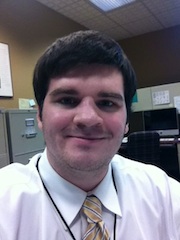
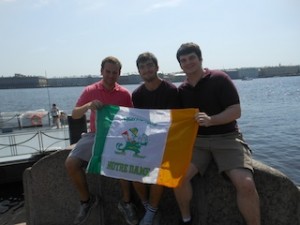
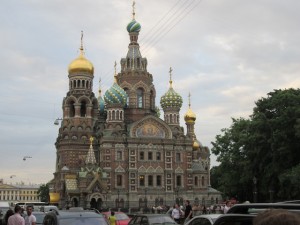
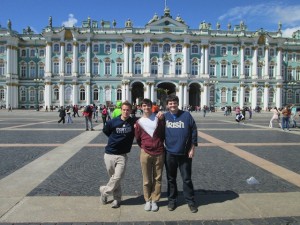
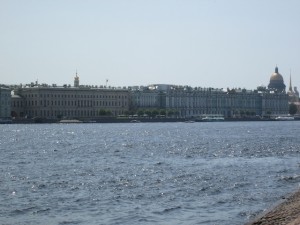
With another week of classes done, it’s hard to believe how fast time goes here, but I also look back and realize how much I’ve been able to experience in just over two weeks in St. Petersburg. We saw Swan Lake at the Mikhailovsky Theatre this week, which was incredible. The theatre was much smaller than I had anticipated, and even from the top level, we could easily see the performance.
On Friday, there was a social put together by our program to meet native Russian students who attend our university. It was a great experience to have them show us their favorite spots around the city. One of them took me and Mike (another Notre Dame student and SLA grant recipient here) to a play this weekend, as well.
That was especially interesting because it contrasted so heavily with the Mikhailovsky. Instead of a tourist-friendly performance at a famous theatre, we saw a play called Brat Alyosha adapted from parts of The Brothers Karamazov. I couldn’t understand very much of the play (they spoke very quickly), but I have read the novel so I could follow along. The play was put on by Moscow performing arts students, and it was extremely well done.
Some of the differences between Russia and America still confound or amuse me. On our social with the locals, we went to a bar that was also a Laundromat, and a packet of ketchup at a restaurant is 50 cents. For the most part, I’m getting used to the little (and big) differences, and I think my language is definitely improving as I talk to more and more Russians.
The classes help with that, mostly because the teacher won’t speak in Russian. But I think the most important thing is interacting with people in stores and on the street, as well as making Russian friends. I’ve realized in coming here that I’ve got a long way to go with my studies, but I think I can cover a lot of that ground this summer.
In the last week, I’ve continued to see more and more of St. Petersburg. There’s so much to do and see that it’s hard to decide what to do. And then it rains and I can’t really go out. I definitely didn’t prepare for the rainy weather in the 50s, but it’s good that it’s not winter.
This week we went on a tour of the Hermitage, one of the largest and oldest museums in the world. Among other buildings, the museum is comprised of the imperial Winter Palace, which almost overwhelms with its size and beauty. Every room you enter is incredibly ornate, and there are more than 3 million works of art in the museum. As our tour guide told us, the museum itself competes with the exhibitions.
On a less grand scale, I also explored some of the metro stations, which are much more grandiose than I’m used to in the United States. Several of them have intricate pillars, chandeliers, and statues, including a station dedicated to Alexander Pushkin. I’ve heard that Moscow’s metro stations are even more incredible, and I’m looking forward to seeing those when we visit the capital in a few weeks.
I’m currently reading Crime and Punishment (in English), which is set in St. Petersburg during the summer. The novel takes place in my neighborhood, and it’s incredible hearing the main character, Raskolnikov, walk along the same streets and canals that I do. Yesterday I walked along some of the paths mentioned in the novel, and I found the apartment where Dostoevsky lived while writing the book, which was pretty cool.
Friday night was a celebration of the shortest night of the year – five hours and 10 minutes. Even in the few hours when the sun is technically set, only two of those hours are actually dark. It’s odd walking down the street at midnight when it’s still light out. Friday night, there was a celebration at the Neva River when the bridges were drawn up, and huge crowds of people went to see the fireworks.
Meeting a couple Russian friends has helped me with my language, but it’s also interesting to help them improve their English. It might get old soon, but explaining how Americans say “text me” instead of “send message to phone” can be pretty amusing.